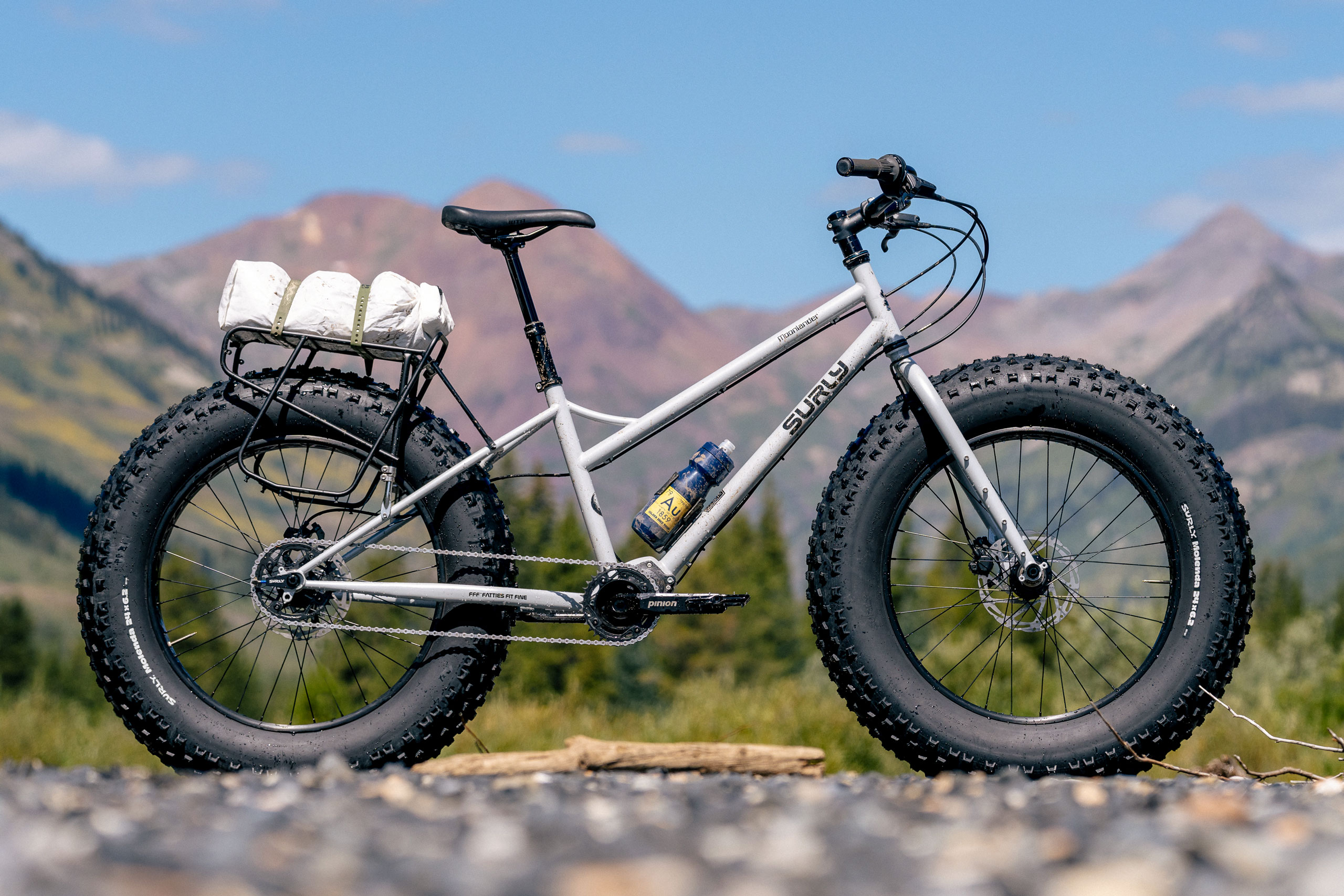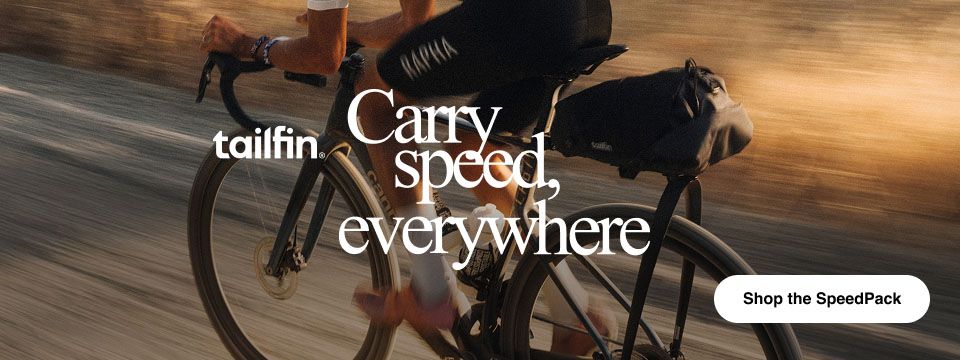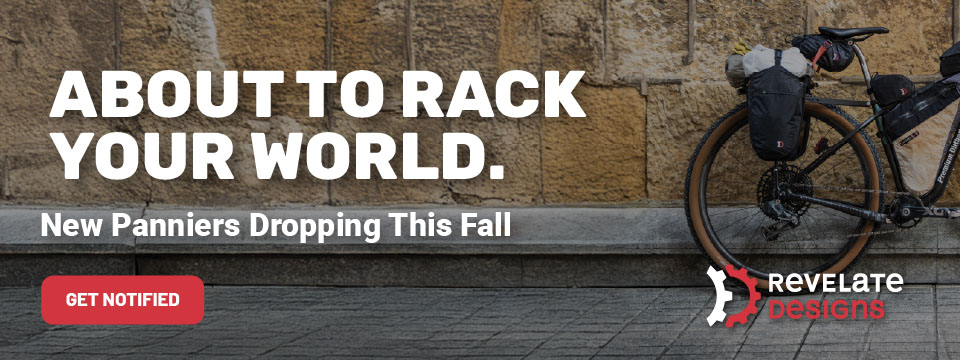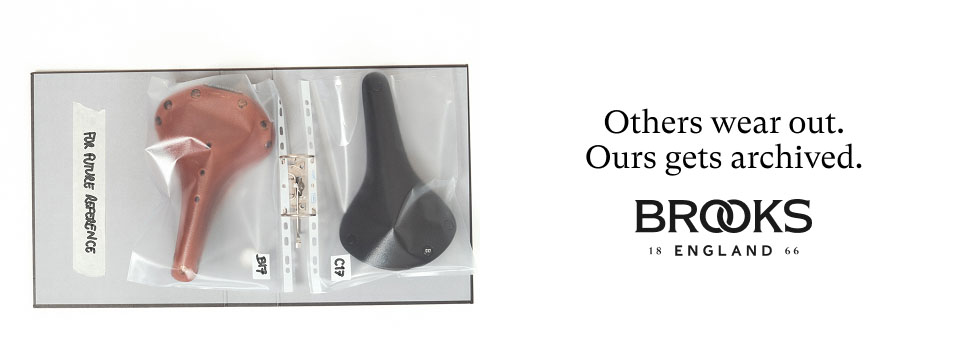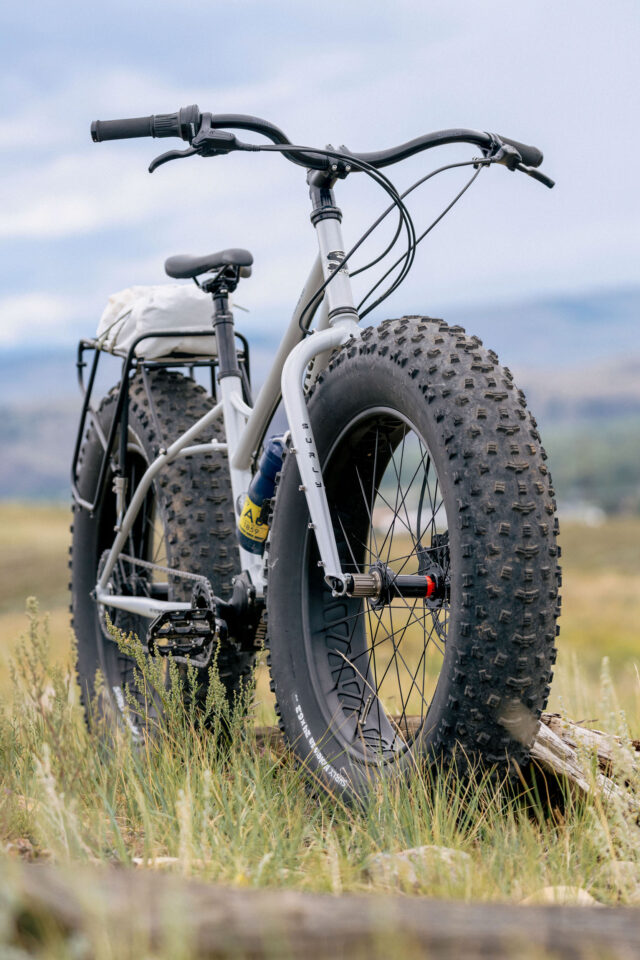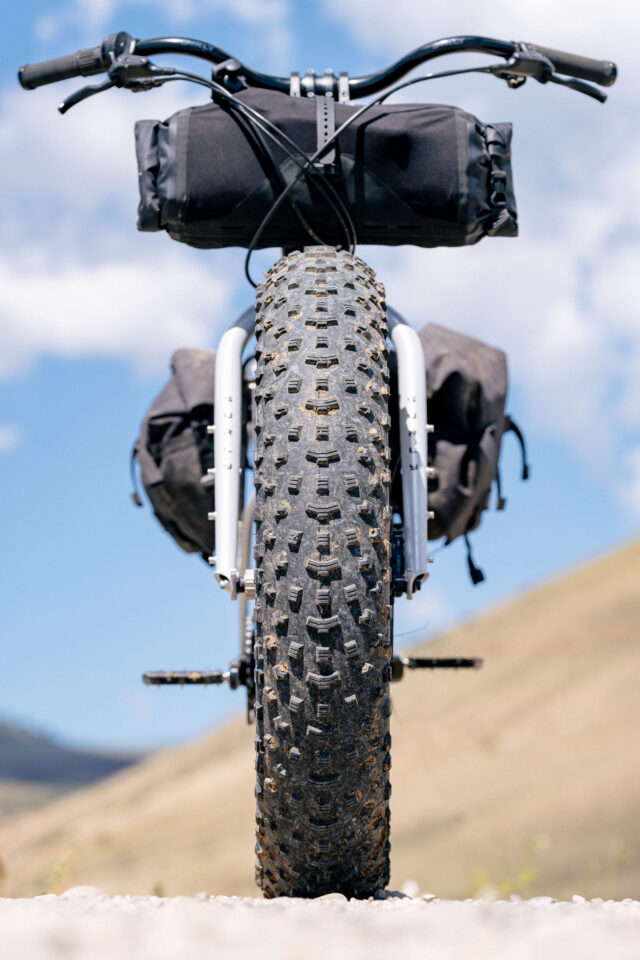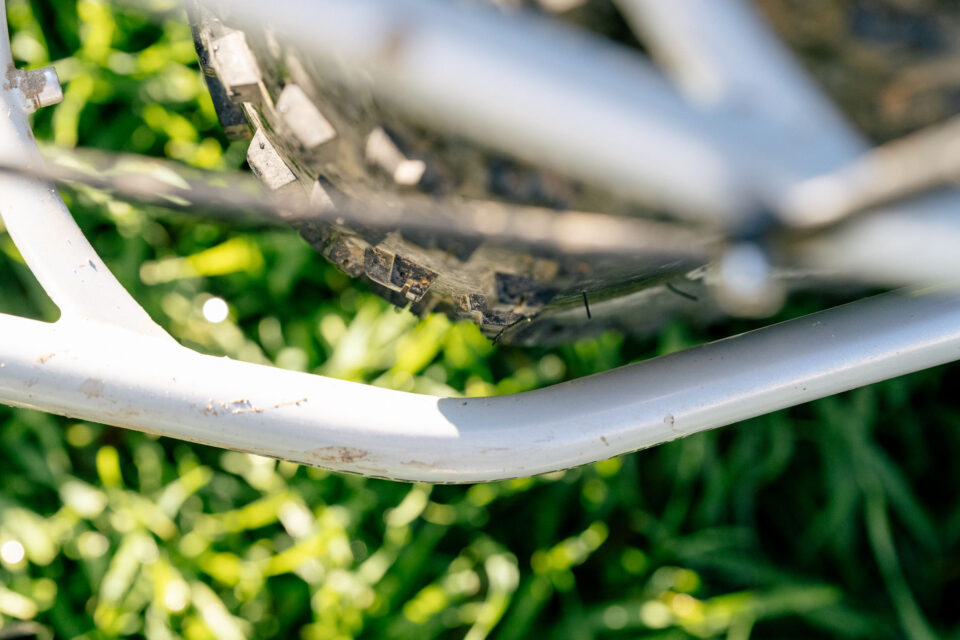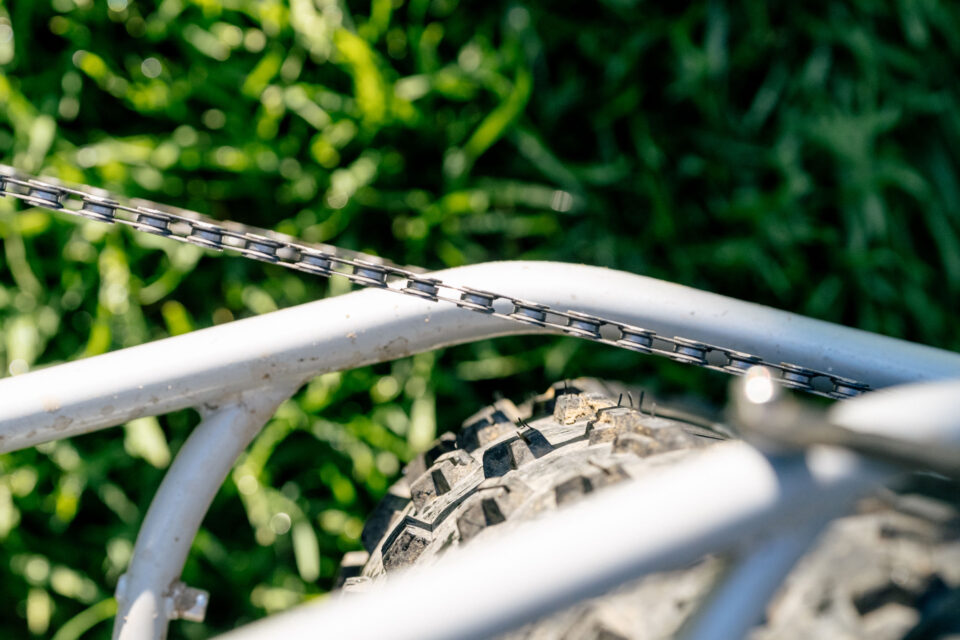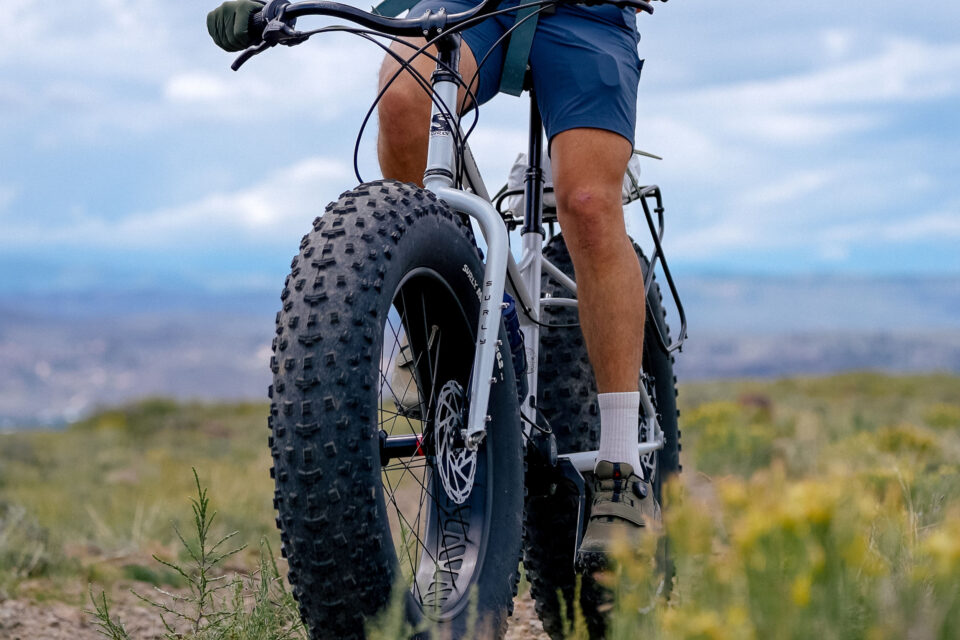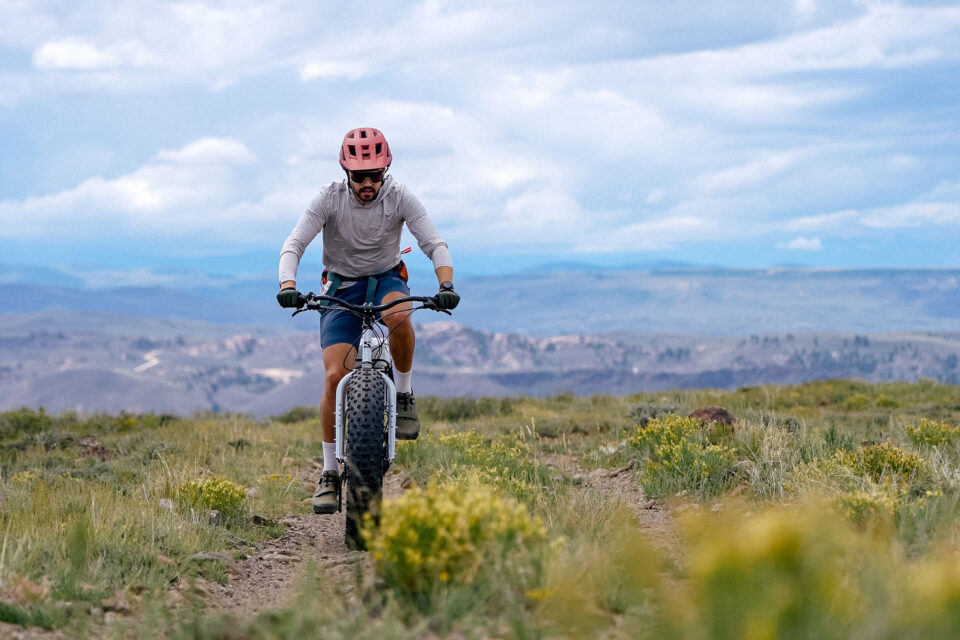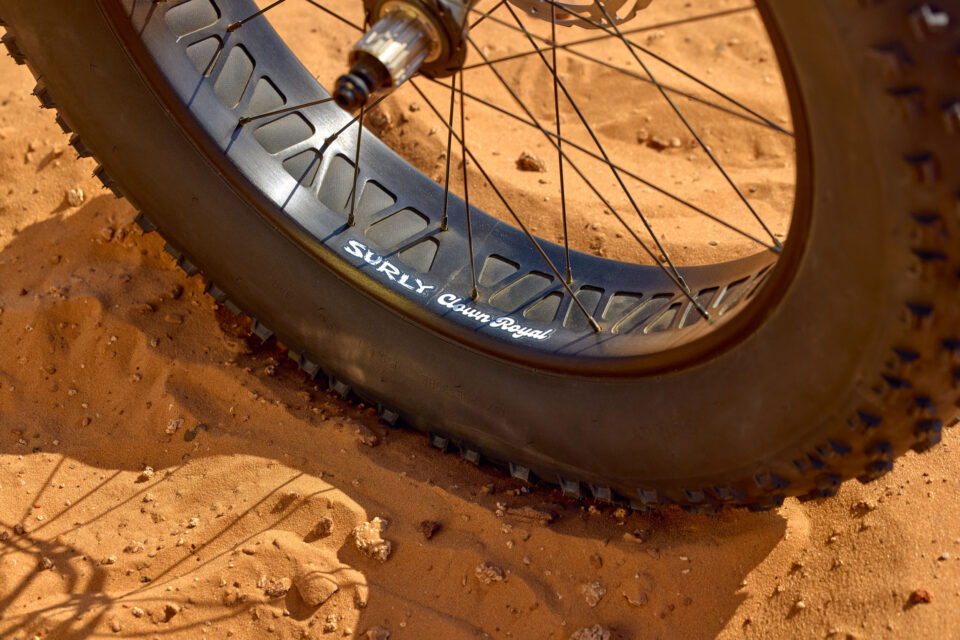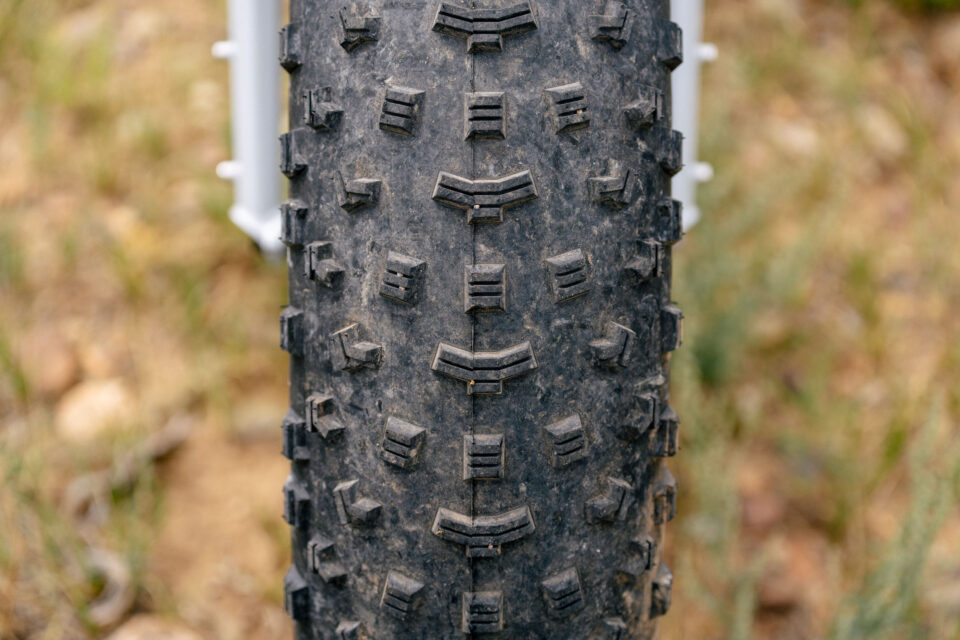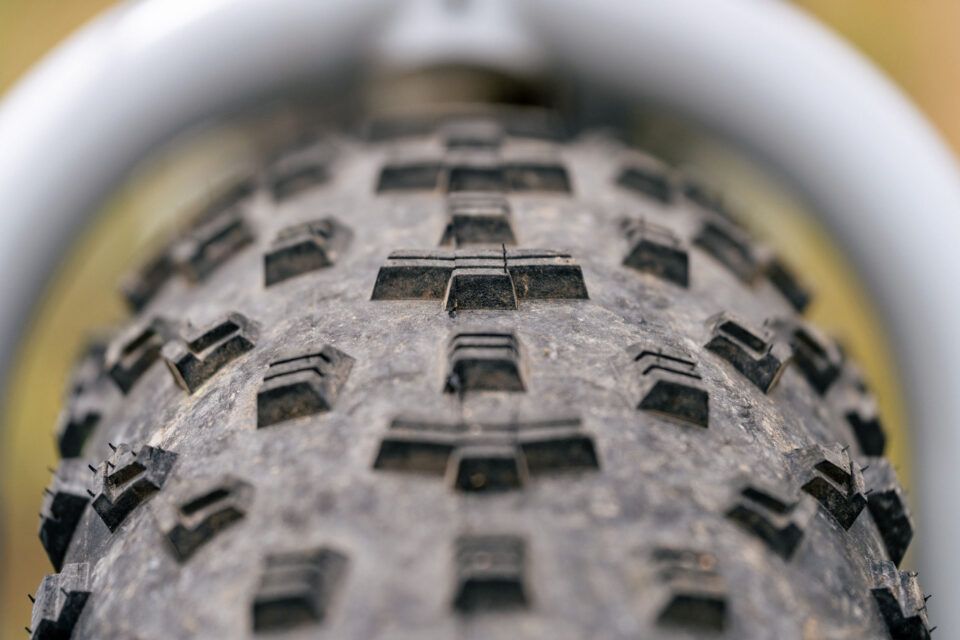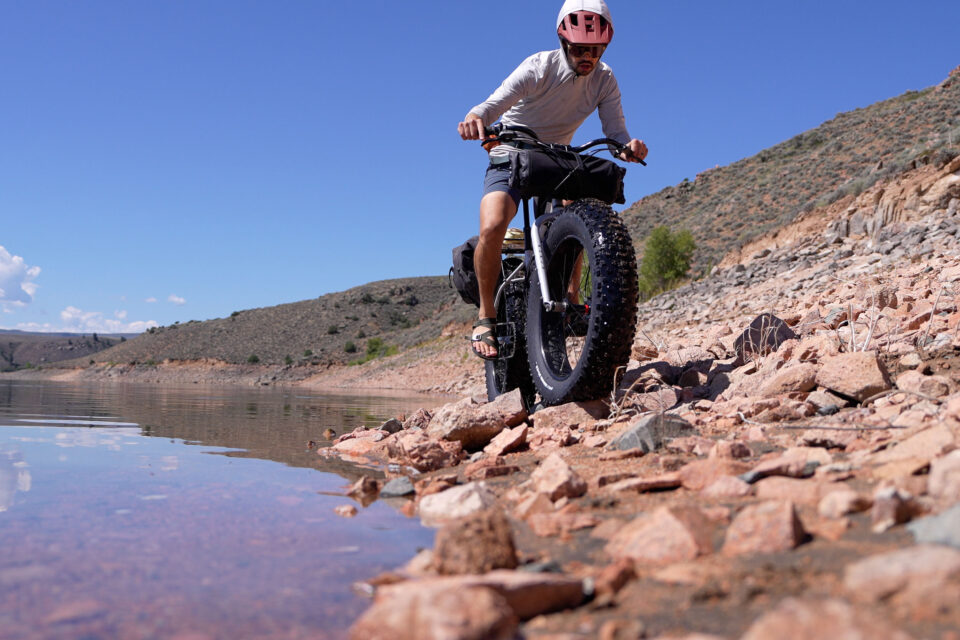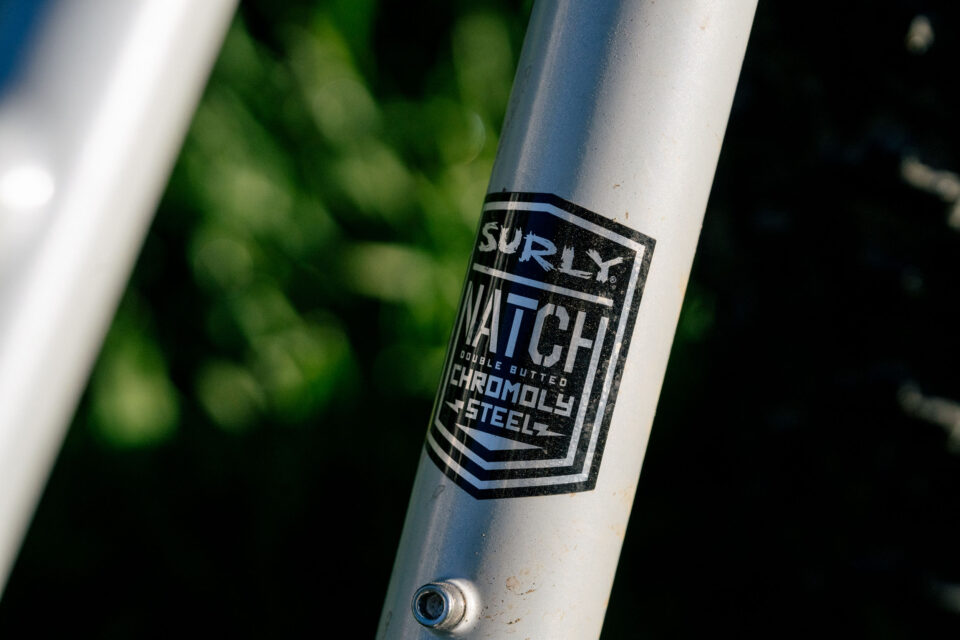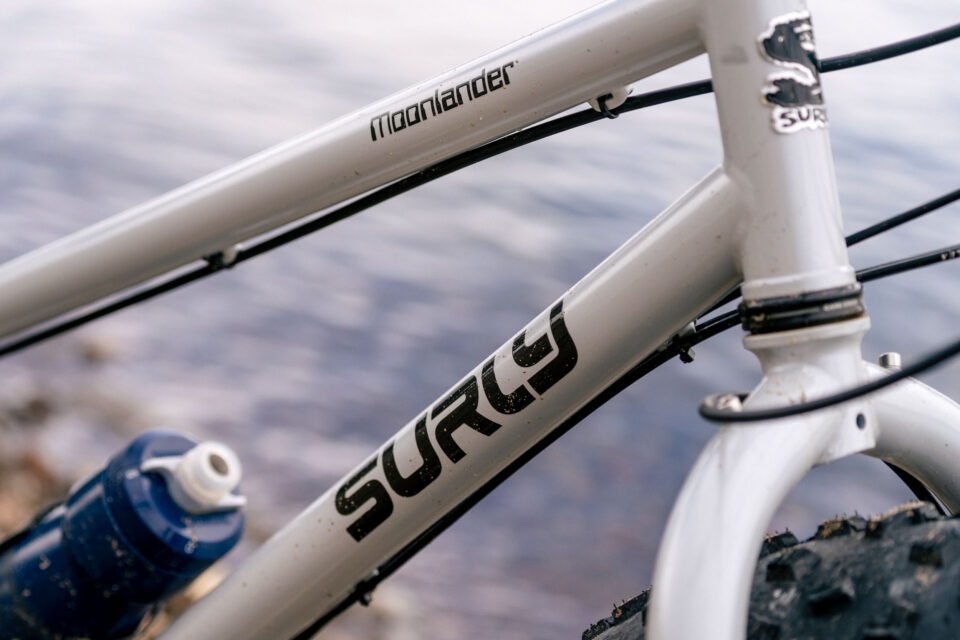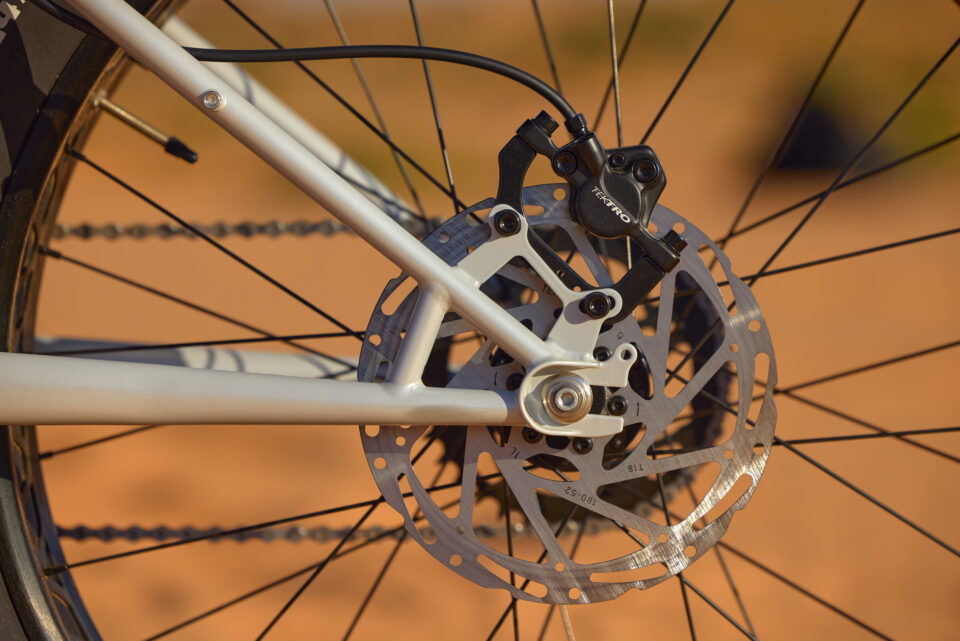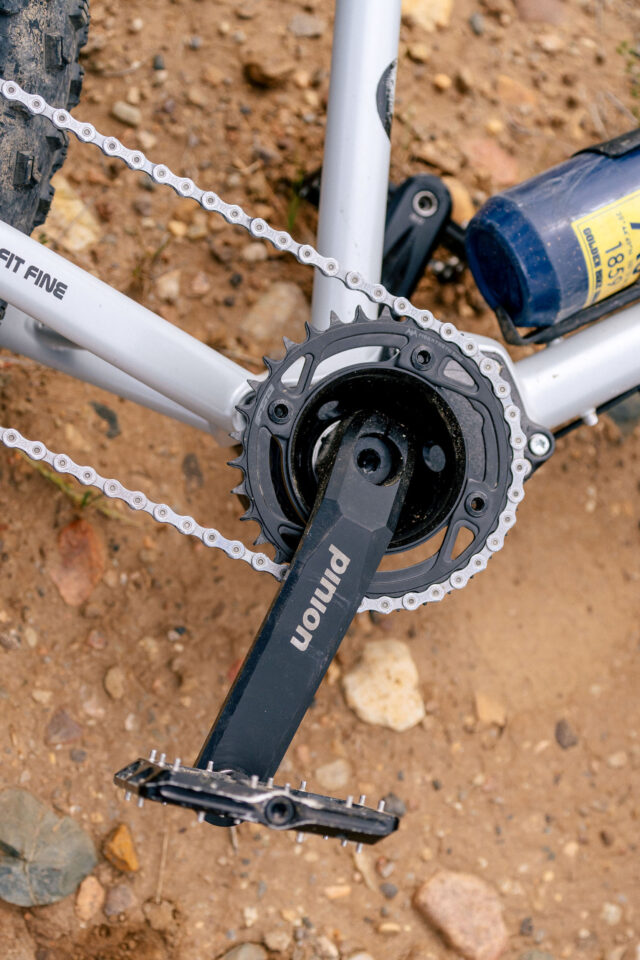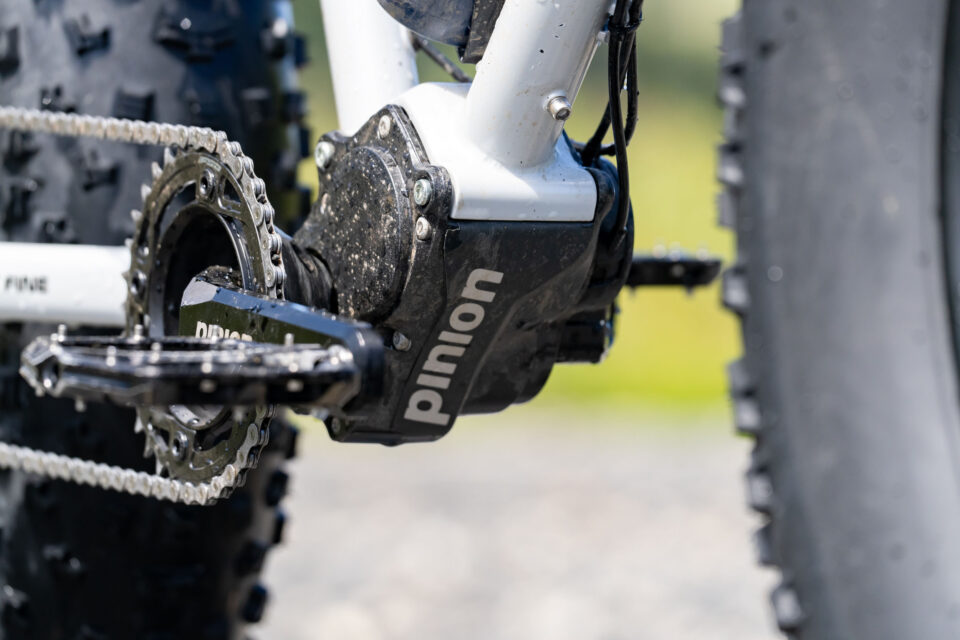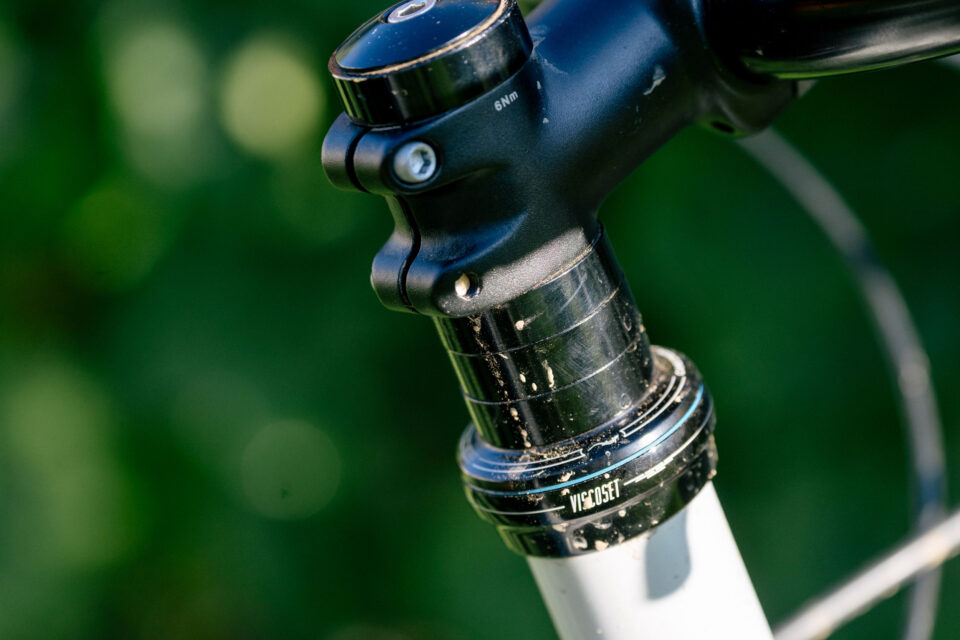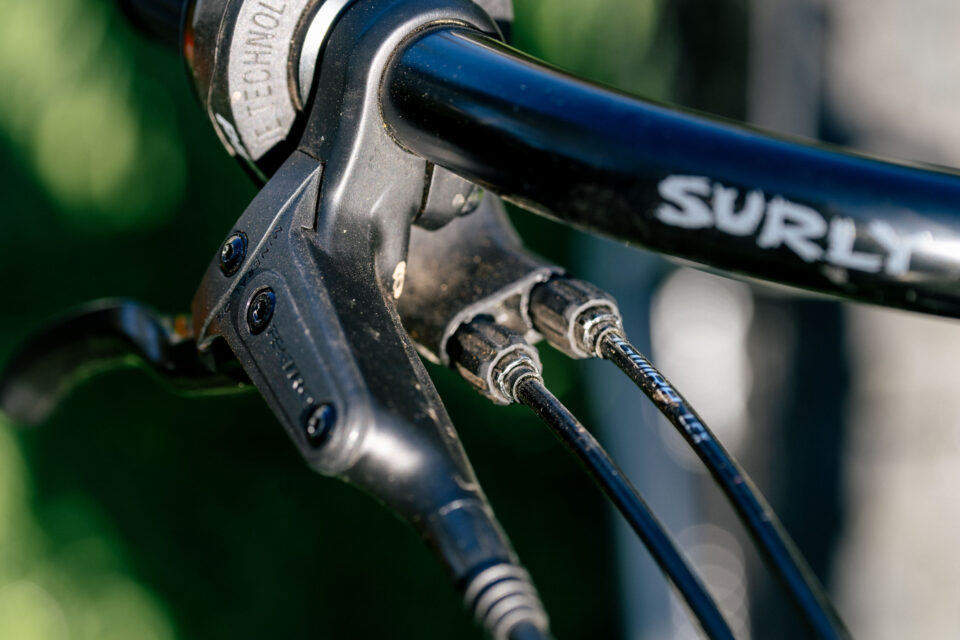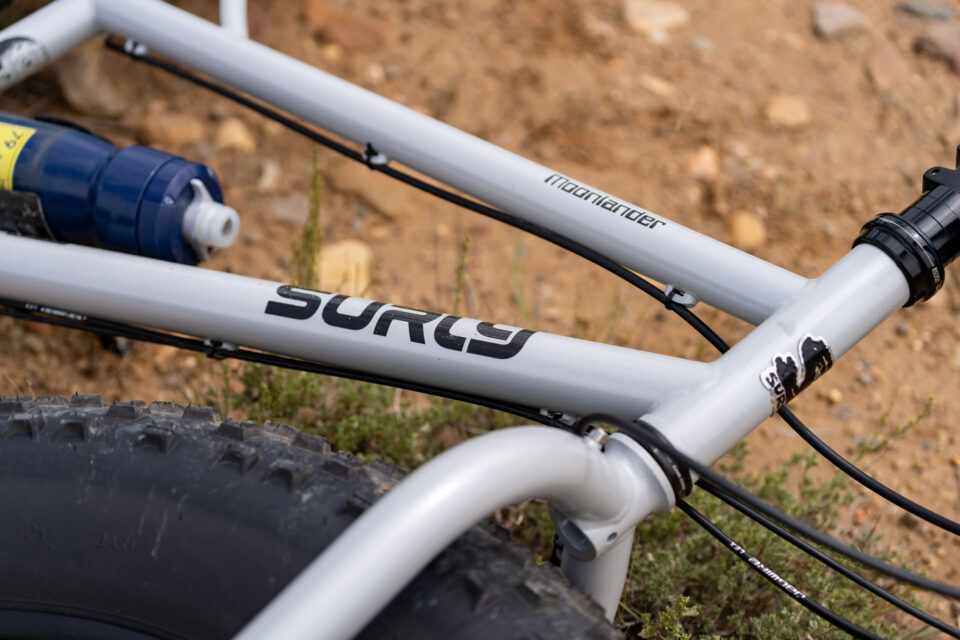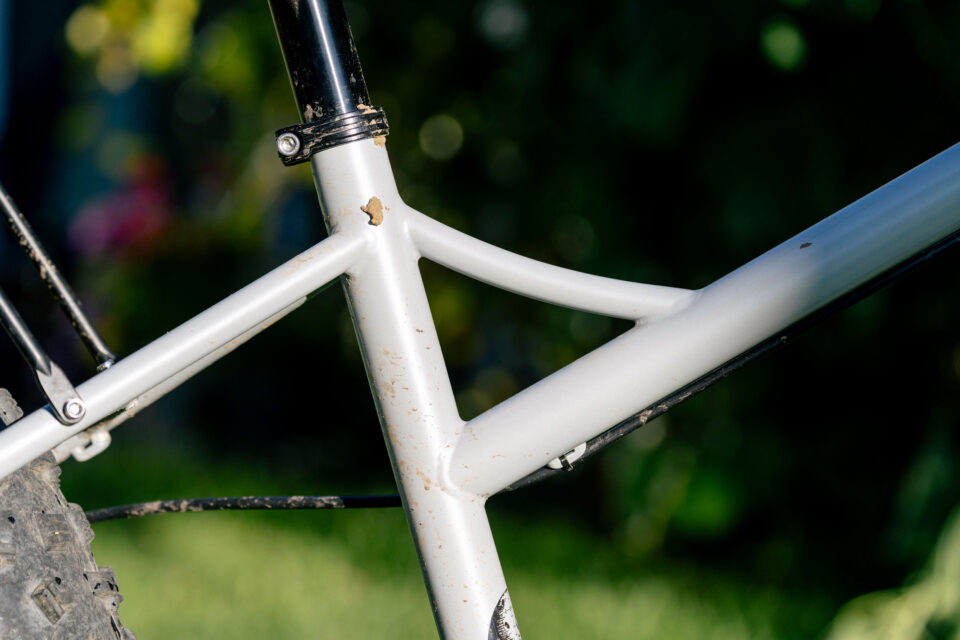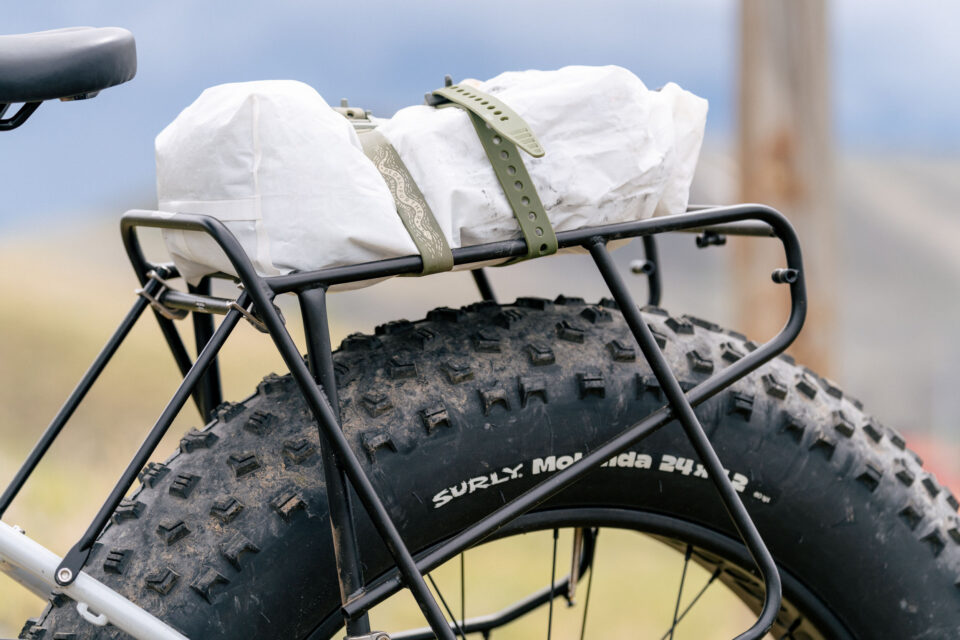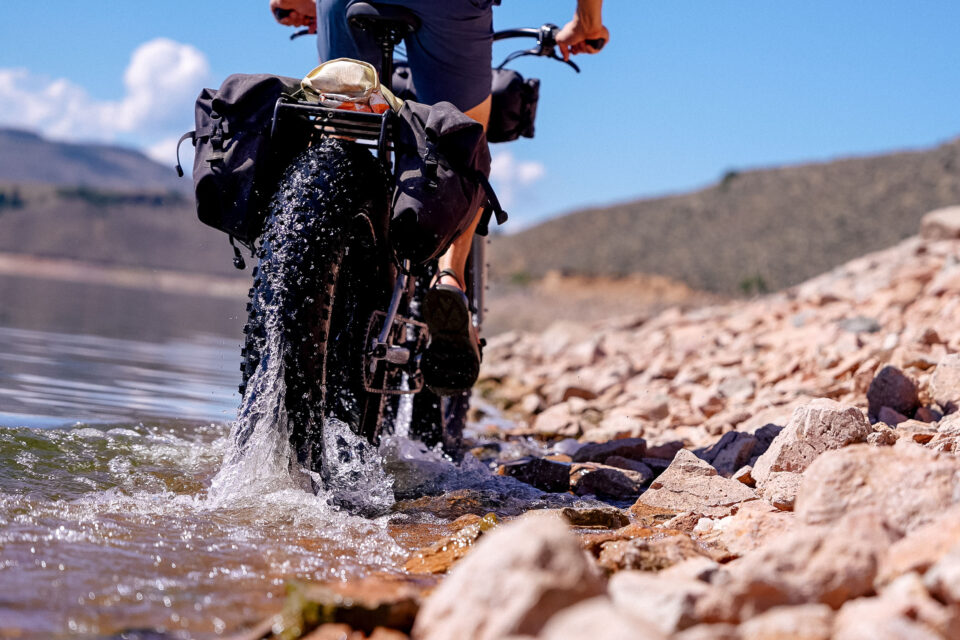Surly Moonlander Review: SRSLY!?
The Surly Moonlander 2.0 has arrived, and it pushes the limits of production fat bikes like never before with massive 6.2-inch tires, a Pinion gearbox, and 197mm front and rear spacing! Naturally, we had to take Surly’s new rock-crawling beast out on the roughest terrain around before today’s launch. Find our full Surly Moonlander review here, complete with a video, pros and cons, all the specs, and a full photo gallery…
PUBLISHED Sep 3, 2024
Surly has always been known for their quirky and innovative approach to bicycles. Back in 2005, they made history with the launch of the Pugsley, the first production fat bike. Then, in 2011, they pushed the boundaries even further with the release of the original Surly Moonlander. This bike was groundbreaking, designed around massive 4.8-inch tires, 100mm rims, and a 28mm offset rear end, allowing the chainstay to clear those exceptionally wide tires. I was so intrigued by the Moonlander’s unique footprint that I bought one as my first fat bike in 2013. Over the years, it became my go-to for countless adventures—whether riding on sand dunes, bikepacking the White Rim, or crawling through riverbeds or deep snow.
The Moonlander truly lived up to its name, offering a “moon rover” ability to float over the roughest terrain. That experience opened the door for me to explore less traditional bike rides, from local winter excursions to races in Alaska. Surly continued to sell the Moonlander until 2016, and before it was discontinued, they introduced its eventual replacement, the Ice Cream Truck, in 2014, followed by the Wednesday, a more direct successor to the Pugsley, a year later.
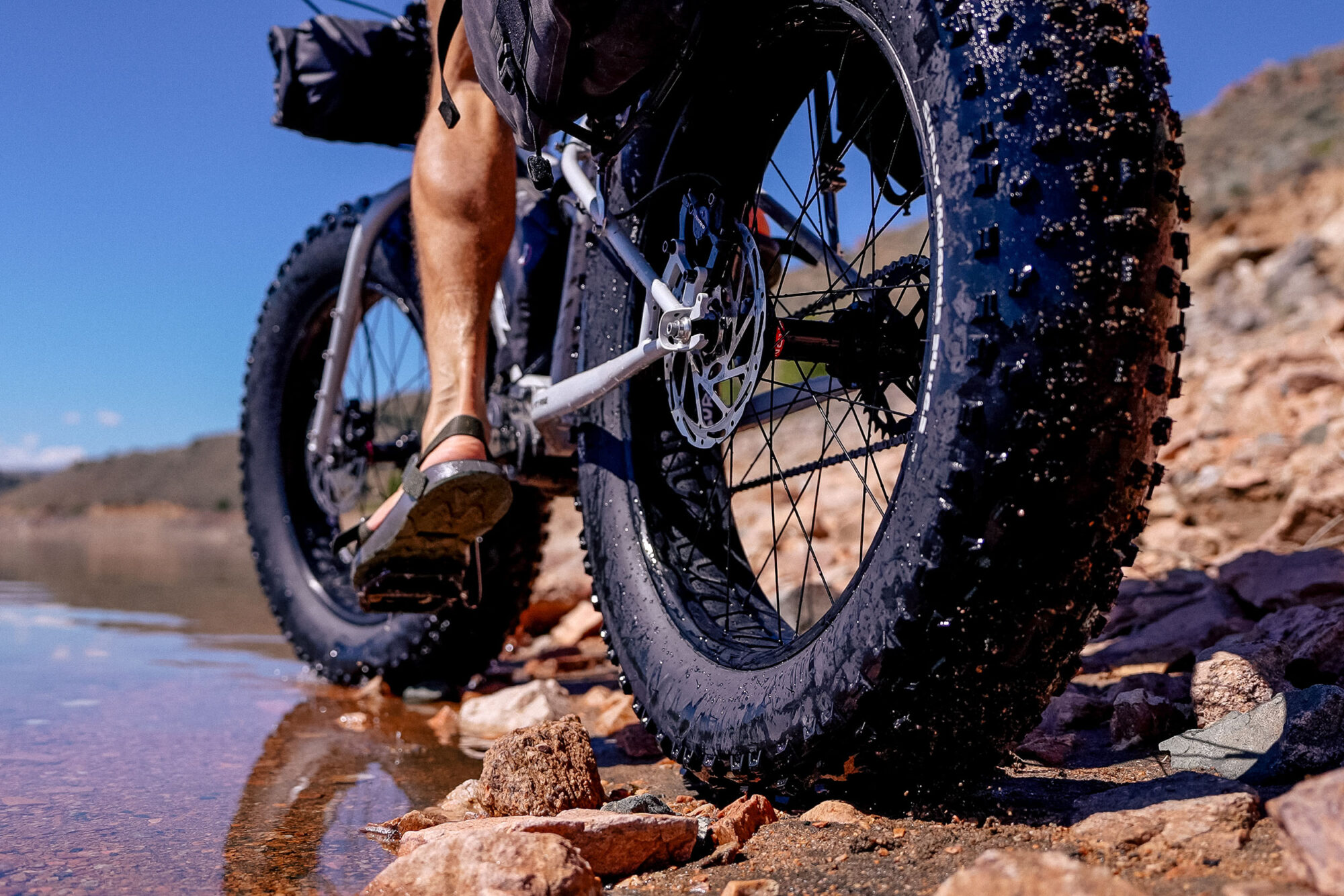
The fat biking world has seen its ups and downs since Surly’s last fat bike release almost a decade ago, but it’s a niche market. For me, these bikes remain a blast, especially in winter. So, when I heard about Surly’s latest model, the redesigned Surly Moonlander 2.0, I was eager to try it. While it shares some traits with its predecessors, the new version takes human-powered overlanding to a whole new level. Watch my video version of the Surly Moonlander review below and then scroll down for a written version with pros and cons, details, photos, and more.
The Surly Moonlander 2.0 (What’s New?)
The new Moonlander is an absolute beast. Just take a look at those colossal 6.2-inch tires on 24-inch rims! While 24-inch rims aren’t entirely new (they’ve been used on kids’ fat bikes), the 6.2-inch tires are a game-changer. This setup creates an enormous footprint while sticking to the standard 197mm hub spacing commonly found on fat bikes. However, in a unique twist, Surly has applied this spacing to both the front and rear hubs (more on that later). The bike is also designed around a Pinion gearbox, which is a smart choice and a significant departure for Surly and any brand under QBP.

One of the most intriguing features of this bike is its mid-tail design, or something close to it. This means the rear end is longer than that of your typical bicycle. The 1,248mm wheelbase (size medium) could rival that of some trail bikes, and it’s significantly longer than most fat bikes on the market. The chainstays measure an impressive 561.8mm. To put that in perspective, the new medium Moonlander is 11.7 centimeters (or 4.61 inches) longer than the same-sized Ice Cream Truck.
Since we’re diving into the specs, the bike also sports a 68.5° head tube angle, a 73° seat tube angle, a 419mm reach, and a 606.3mm stack height on the medium, with plenty of standover clearance thanks to its sloping top tube. At 5 feet 9.5 inches tall, I found the medium to be a perfect fit. It was an easy decision to go with it over the large, as it’s simply less bike to pedal and maneuver.
| Size | SM | MD | LG | XL |
|---|---|---|---|---|
| Effective Top Tube | 575 | 605 | 635 | 665 |
| Standover | 736 | 769 | 793 | 801 |
| Reach | 398.2 | 419.6 | 443.9 | 468.2 |
| Stack | 578.4 | 606.3 | 624.9 | 643.5 |
| Total Seat Tube Length | 368 | 419 | 480 | 521 |
| Headtube Length | 120 | 150 | 170 | 190 |
| Head Tube Angle | 68.5° | 68.5° | 68.5° | 68.5° |
| Seat Tube Angle | 73° | 73° | 73° | 73° |
| BB Drop | 45 | 45 | 45 | 45 |
| BB Height | 349 | 349 | 349 | 349 |
| Chainstay Length | 561.8 | 561.8 | 561.8 | 561.8 |
| Fork Length | 460 | 460 | 460 | 460 |
| Fork Offset | 50 | 50 | 50 | 50 |
| Wheelbase | 1215.4 | 1247.9 | 1279.5 | 1311.2 |
Despite being built around 24 x 6.2-inch wheels, the Moonlander can accommodate a range of wheel sizes, including 26 x 5.1-inch, 27.5 x 4.8-inch, and 29 x 3-inch, allowing you to mix things up as you see fit. It features 12mm thru-axles front and rear, a rigid fork (with no option for suspension), internal dropper post routing, a 30.9mm seat post diameter, and no restrictions on front chainring size, which is quite amusing.
Midtail Bikes
Lately, there seems to be a growing trend with mid-tail bikes. Earlier this year, I reviewed the new Esker Hayduke LVS, and while the Moonlander has about a 90mm shorter wheelbase and nearly 40mm shorter chainstays, it still captures that long-tail feel, something Surly knows well from their Big Dummy and Big Easy cargo bikes. However, the LVS and Moonlander are fundamentally different, as the LVS can’t venture into the same level of rugged terrain that the Moonlander can.
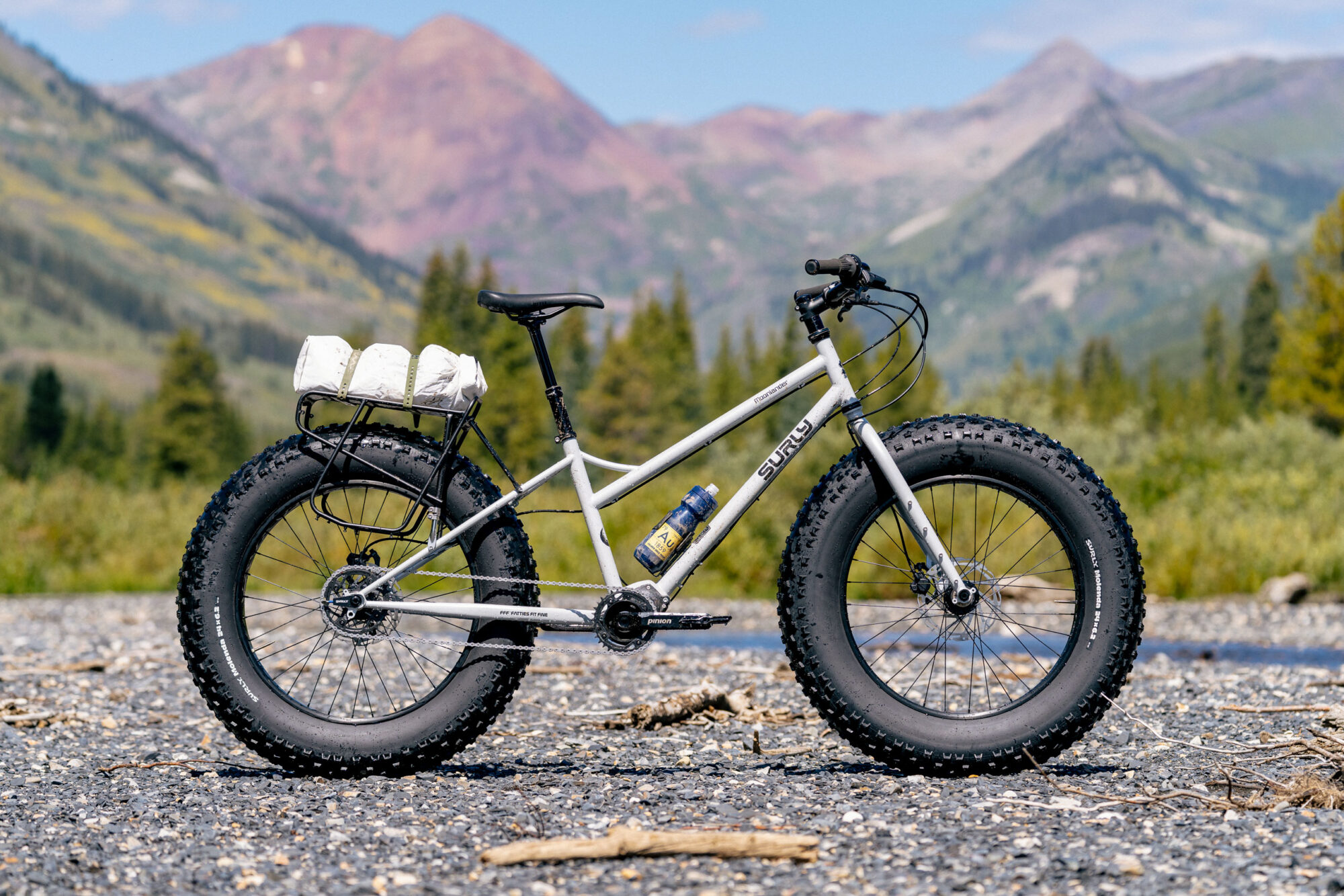
The Surly Moonlander is more reminiscent of Jean Naud’s three-wheeled fat bike from the 1980s, which was built to carry 72 liters of water with a pivoting rear end and prototype Michelin tires. It also shares some DNA with Dan Hanebrink’s Extreme Terrain bike from 1991. Recently, we’ve seen custom long-tail fat bikes and production models like the Salsa Blackborow, all featuring massive tire volume and extended wheelbases. This design helps the bike feel more stable and predictable, giving riders the confidence to tackle challenging surfaces like riverbeds, dunes, beaches, and snow, truly opening up a world of possibilities—for better or worse.
Big Box
I was thrilled when Surly told me they’d be sending this bike before its official launch. I had a lot of ideas about where I could take it. The shipment was massive—apparently weighing in at 113 pounsa—and had to be shipped via FedEx freight, which significantly slowed down the delivery. It was amusing when I got a call to coordinate the drop-off, involving a big freight truck at my house. When the box arrived, it was smaller than I expected, but the wheel and tire combo inside was absolutely mind-boggling. Just comparing the front wheel to those on my other fat bikes, the size difference was staggering. The Moonlander’s wheel and tire combo is enormous. In fact, when we measured from the ground up, the wheel stood just over 31 inches uncompressed—much larger than the 27.5-inch and 26-inch fat bike wheels I have on other bikes.

How it Rides
The day after receiving this bike, I quickly found myself pedaling along the shores of Blue Mesa, Colorado’s largest body of water, located just west of Gunnison. With water levels not maxed out, the rocky shoreline presented a perfect testing ground. The terrain was a challenging mix of sand, large rocks, small rocks, and off-camber sections, providing a variety of conditions to see how the 6.2-inch tires would handle the roughest spots. Throughout my test period, my goal was to find the worst riding conditions I could think of in hopes of stifling these monster tires.
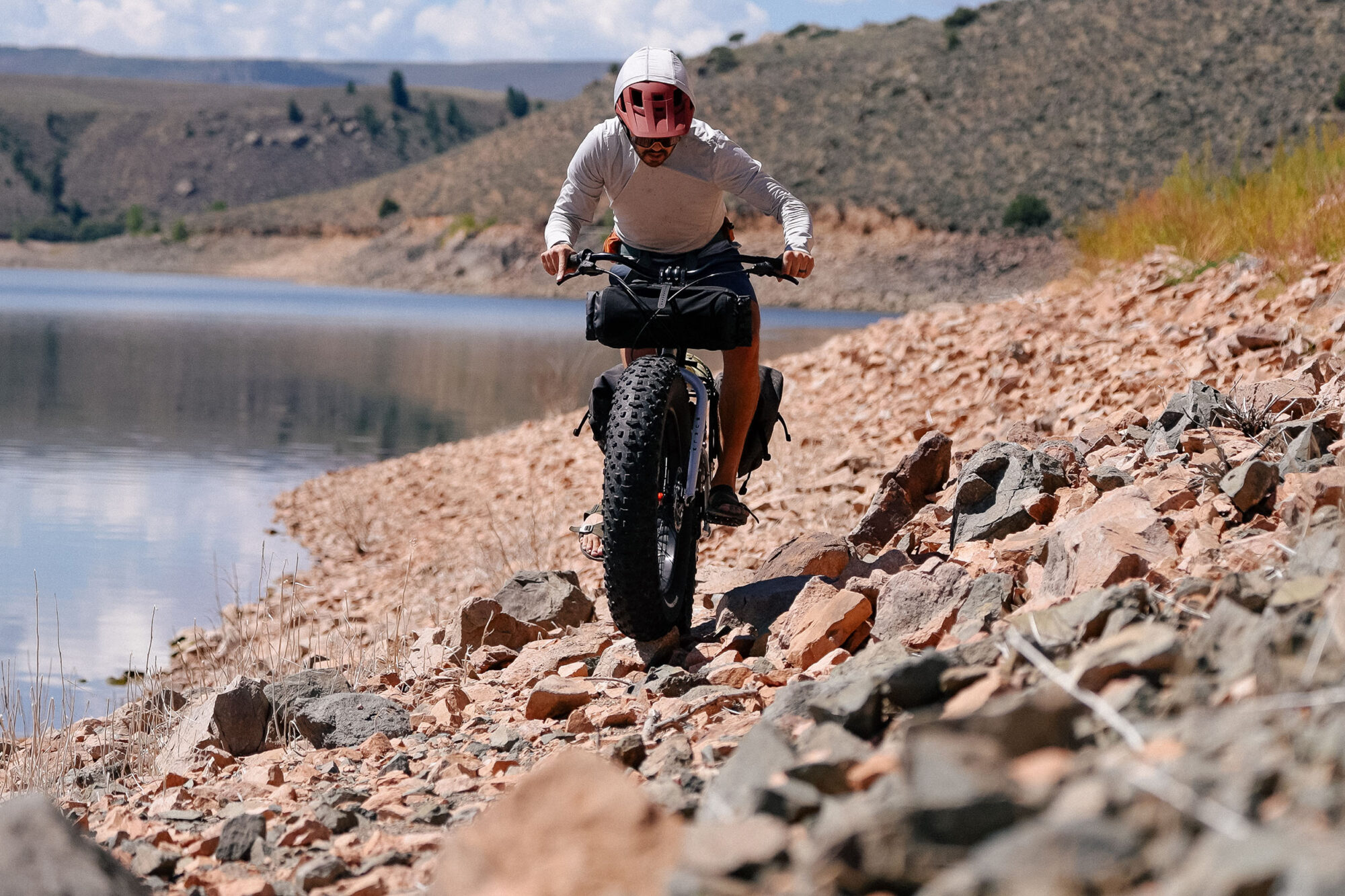
As with any fat bike, tire pressure plays a crucial role—often more so than geometry. It’s the difference between trudging along and pedaling, and the Moonlander was no exception. I never inflated the tires above 7 psi, starting in the 5-6 psi range. This pressure proved efficient on less technical terrain while still allowing the bike to handle rocks and sand effectively. Lowering the pressure further would certainly increase flotation and make the ride smoother over rough terrain, but it would come at the cost of efficiency.
Dropping the pressure down to 4 psi—or even slightly lower—made a noticeable difference when riding on soft riverbeds or larger boulders. The tires compressed just enough to grip the rocks, helping me maintain momentum. However, I quickly realized I should have brought a larger, more efficient pump, or better yet, an electronic one. Once I transitioned to singletrack or road, the auto-steer effect became pronounced, especially below 5 psi. It would be ideal if Surly included one of those Flextail pumps with the bike, making it easier to quickly adjust tire pressure. This would likely encourage more frequent pressure adjustments to match the terrain.
I dropped the tire pressure down to 1 or 2 psi for rock crawling—yes, rock crawling. It’s an incredible machine when doing so, but you really have to resist the urge to overthink it. The key is to unlearn what you know about riding technical terrain and simply pedal—letting the bike do the work. It reminded me of Paul Rudd’s quote from Forgetting Sarah Marshall: “Don’t try to surf, don’t do it. The less you do, the more you do. Do less, try less.” That’s exactly what I did. I stayed light on the handlebars, relaxed, trusted my line, and let the tires take over. The result was astounding; the Moonlander practically crawled over anything in its path. It’s an incredible and singular feeling.
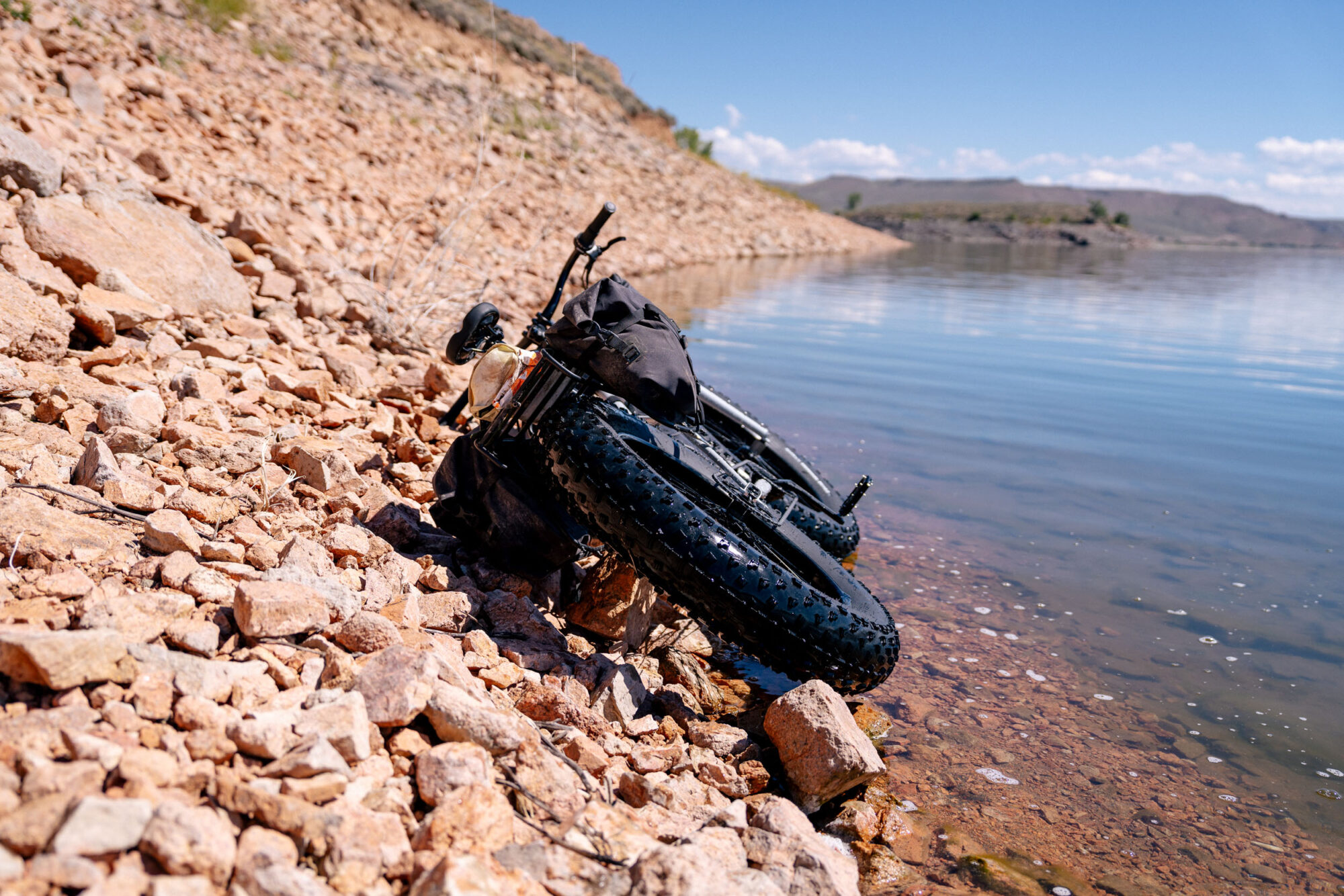
The bike features a shallow 45mm bottom bracket drop and an overall bottom bracket height of 349mm, which is noticeably high. Not in a bad way, though—the bike’s overall length provides plenty of stability, but the higher bottom bracket keeps it clear of small boulders and stream crossings. However, you’ll inevitably strike the bottom bracket if you’re playing on larger rocks, so a bit of foresight is still necessary in those situations.

Naturally, I took it down some singletrack. It felt like navigating a bike through a crowded airport terminal—it demands a lot of forethought, and I relied heavily on the brakes. With the tire pressure at 6 psi, it was manageable, but at 4 psi or lower, it became less enjoyable and more of a chore. Generally speaking, the Moonlander isn’t built for speed on smooth terrain, whether uphill or downhill, but it truly shines on rougher ground. That said, when I did manage to get it moving at a decent speed on the road, I experienced a bit of steering chatter. It wasn’t anything severe and never got out of control, likely thanks to the installed Viscoset. It makes me wonder how it would handle without that component.
Overall, while the Moonlander feels slightly longer than the traditional fat bikes I’ve tested over the years, it’s not nearly as strange as I anticipated. It rides much like a regular fat bike, and I think that’s partly due to the 24-inch wheels and the fact that it’s not as long as its massive tires might suggest. The wide Q-factor is still something to get used to, but Surly has managed to keep it the same as on the Ice Cream Truck, which is a nice touch.
Build Kit
Normally, the bike itself takes precedence over its components, but with the new Moonlander, the mix of new components and specs makes them worth discussing. Let’s start with the Pinion gearbox, which I believe is perfectly suited for this bike. While it offers only 9 speeds with larger gaps between gears, it still provides a maintenance-free 568% range—wider than most popular 12-speed drivetrains. This setup makes perfect sense for a bike designed for off-grid adventures. If you’re new to Pinion (find my review here), shifting without pedaling might take some getting used to, but I found it surprisingly easy on this bike, especially since it trackstands better than most bikes I’ve ridden.
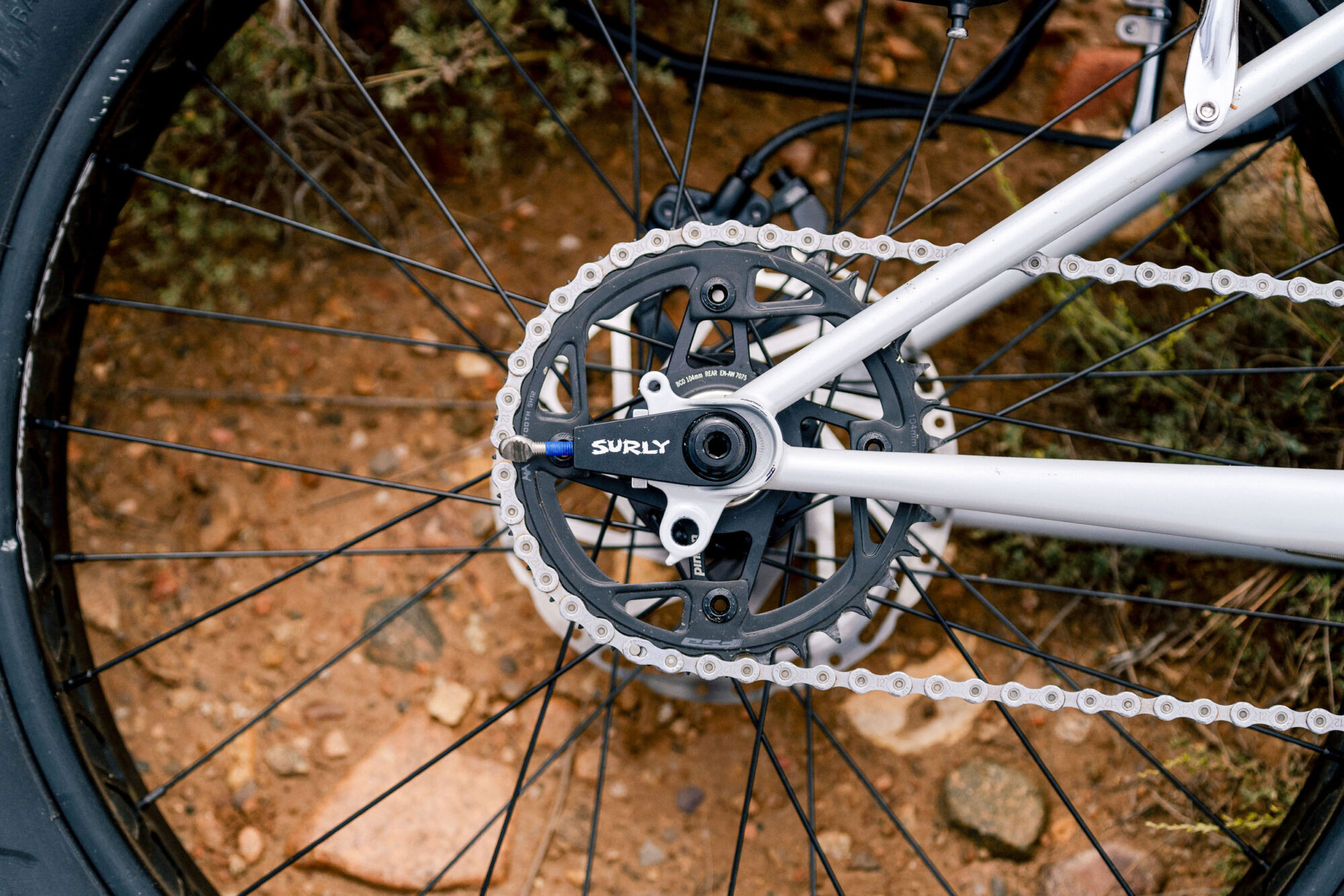
In typical Surly fashion, they kept the rear derailleur hanger, leaving the door open for some bizarrely interesting possibilities. While Surly has no immediate plans to make a gearbox insert compatible with a standard bottom bracket and crankset, a few brands have teased this idea, which will be exciting to see. And since the Moonlander uses a chain, if you really wanted to get creative with your gearing, you could theoretically add a derailleur and cassette, creating smaller increments between gears and an even larger range. I might experiment with that in a future video. It could be a fun project.
- Fork: Surly Moonlander Fork, 51mm IS disc mount, 12 x 197mm thru-axle
- Drivetrain: Pinion C1.9 XR 9spd Gearbox
- Crankset: Pinion for Surly crankset, with Pinion high-offset spider
- Chainring: FSA MegaTooth Chainring, 34T
- Chain: KMC X10 EPT Anti-Rust
- Shifter: Pinion Rotary Shifter
- Headset: Cane Creek 40
- Handlebar: Surly Terminal
- Seatpost: TransX YSP15JL Dropper, 30.9mm
- Brakes/Rotors: Tektro 180/180, 6-Bolt
- Stem: Promax 31.8mm
- Grips: Velo Lock-on
- Saddle: WTB Volt Medium
- Rear Rim: Surly Clown Royal 24”, 100mm wide
- Rear Hub: 197x12mm, Novatec, 32h
- Front Wheel: Surly Clown Royal 24”
- Front Hub: 100mm wide; 197x12mm, Novatec, 32h
- Tires: Surly Molenda Tire 24 X 6.2-inch, 60tpi, wire bead*, TPU Tubes
*Aftermarket tires have folding bead
Now, let’s talk about the wheel size. While 24-inch wheels are typically reserved for kids’ bikes and e-bikes, they were essential for fitting those massive tires into the Moonlander’s 197mm spaced frame. In true Surly style, they designed a 24-inch x 100mm rim called the Clown Royal, which comes tubeless-ready. However, my bike arrived with TPU tubes, and I wasn’t exactly eager to tackle the challenge of swapping out 6.2-inch tires. Anyone who’s done it knows that changing fat bike tires is a workout. Surly mentioned that the Moonlander’s TPU tubes don’t stretch to fill the tire, which provides better sidewall support and improves the tire’s overall traction and conformity to terrain changes at low pressures.
A particularly cool aspect of this frame and build is the identical front and rear spacing, with Surly opting for a rear Novatech hub and driver for the front hub as well. This opens up some unique bailout options—like running the same cog on both the front and rear or perhaps a more practical option: installing a smaller cog on the front wheel. This way, if your chain breaks during a ride, you can swap the wheels, adjust and resize the chain, and use the Snuggnut to tweak your dropout for higher gearing. This setup makes the Moonlander even more expedition-ready without needing to carry a cassette lockring tool.
The Surly Moonlander is equipped with 24 x 6.2-inch 60 TPI tubeless-ready Molenda tires designed specifically for the Clown Royal rims. These tires share some design vibes with Surly’s Lou tires but offer significantly more volume. They feature deep lugs arranged in four distinct rows, providing excellent traction in wet conditions, especially on off-camber rocks. Even when submerged, the lugs grip rocks effectively, helping you maintain forward momentum.
Rounding out the components, the Moonlander comes with a 125mm TransX dropper post, Surly’s Terminal Bar (which does a solid job of keeping you upright), and Tektro HD-M285 brakes with 180mm rotors front and rear. While these two-piston, post-mount brakes get the job done, they lack stopping power. A set of four-piston brakes would likely be a better match for this bike. I also rode with flat pedals during my test, which felt like the right choice. I found myself getting on and off the bike more frequently than I do with my other rides, and the flat pedals made that much easier.
Riding Loaded
The bike’s sloping top tube results in a minimal frame space, but I appreciate the overall design, which makes mounting and dismounting easier. It features Surly’s Natch Double Butted Chromo Tubing and includes rear rack mounts, fender mounts, two bottle bosses on each side of the downtube, and a four-pack of bosses on the fork. However, I would have liked to see mounts on the back of the seat tube in the small area between the seat tube and the rear wheel. It seems that on smaller frame sizes, the seat post may have interfered, leading to the omission of these mounts.
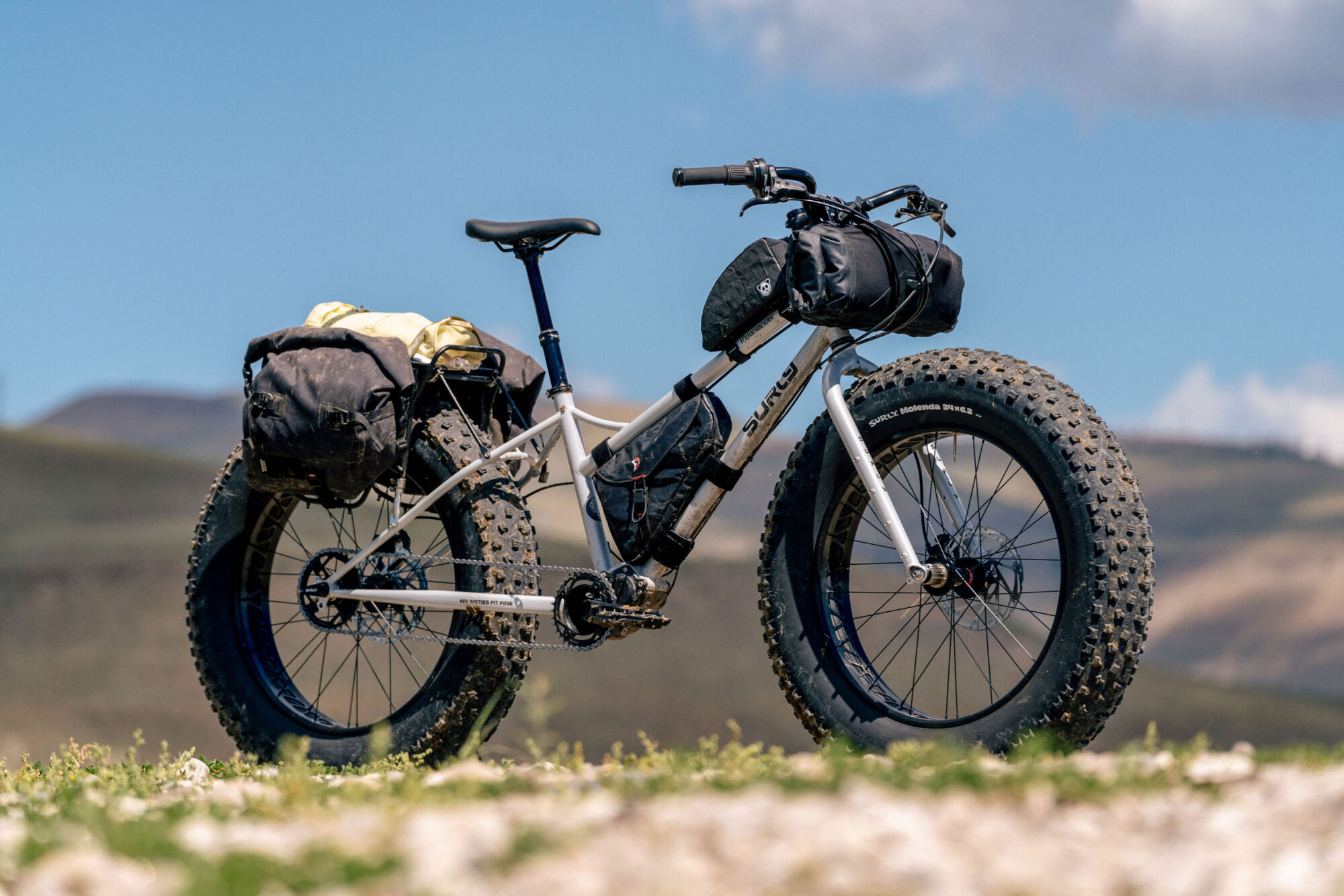
A standout feature is the small handhold near the seat/downtube junction. It’s been incredibly useful for positioning the bike, lifting it, and turning it around.
Although the Moonlander is already quite heavy, with the medium size weighing 46.6 pounds (21.14 kilograms), including some dirt, it manages additional weight impressively. Loaded with gear, the bike felt stable on technical sections and continued rolling smoothly. I installed the Surly Wide Disc Rack, which was straightforward to set up and compensated for the space lost in the main triangle. Despite the additional weight being primarily on the rear tire, the bike maintained a good balance. I wish Surly included the rack with the bike, but it’s available separately for an additional $160.

- Model/Size Tested: Surly Moonlander, Size Medium
- Actual Weight: 46.6 pounds (21.14 kilograms)
- Place of Manufacture: Taiwan
- Price: $4,199
- Manufacturer’s Details: Surly Bikes
Pros
- 6.2″ tires are a game-changer for making rough terrain rideable
- Surly went with a Pinion gearbox!
- Midtail design and mounts make a great platform for carrying gear
- Can be equipped with 29+ or other fat wheel/tire combinations
- No new hub standard
- Will take you to areas most humans avoid
- Practical machine for impractical terrain
Cons
- No other tire options in this size
- No mounts on back of seat tube
- Could use stronger brakes
- Takes more time to deflate and inflate tires
- Only comes in one color
- Heavy
Wrap Up
Who is the Moonlander for? This bike is perfect for folks who plan to tackle terrain where even a standard fat bike might struggle—think riverbeds, shorelines, sand dunes, or adventurous packrafting trips. It brings to mind the explorations of Mike Curiak, Steve “Doom” Fassbinder, and Eric Parsons from a decade ago, and it’s easy to see how it could enhance such endeavors. The Moonlander is especially adept in snow and sand, making it an excellent choice for frequent beachgoers.
While it’s not the lightest or most agile bike, the Moonlander is surprisingly efficient on challenging terrain, where others might falter. It requires some creativity, but if that appeals to you, this bike could be an ideal fit.
The Moonlander is available in four sizes, from small to extra large. The full build is priced at $4,199, and the frame and fork alone are available for $1,199 MSRP. It comes in a single Lunar Dust Gray colorway. What are your thoughts on the new Surly Moonlander? Leave me a message in the Conversation below!
Please keep the conversation civil, constructive, and inclusive, or your comment will be removed.







